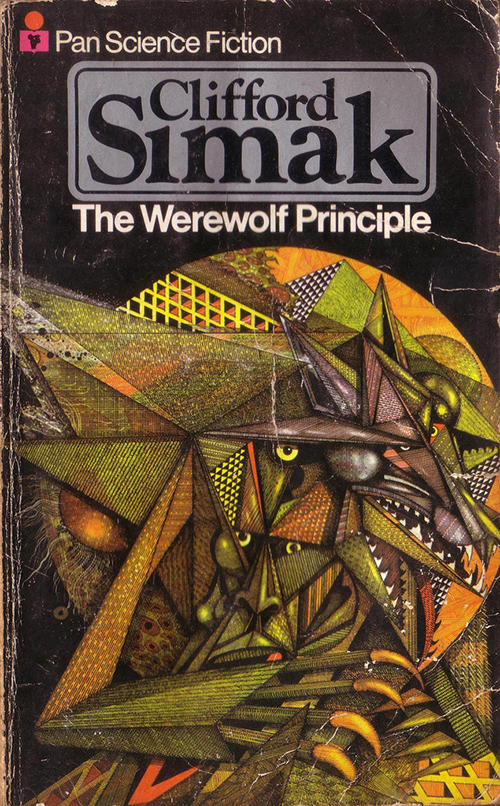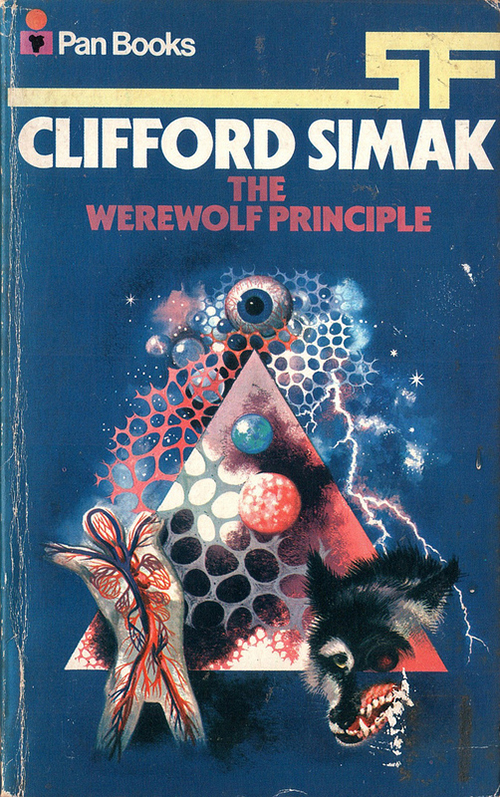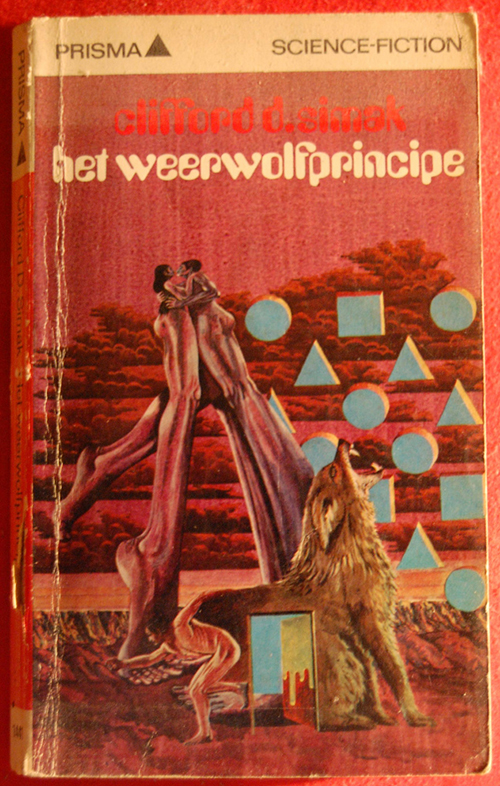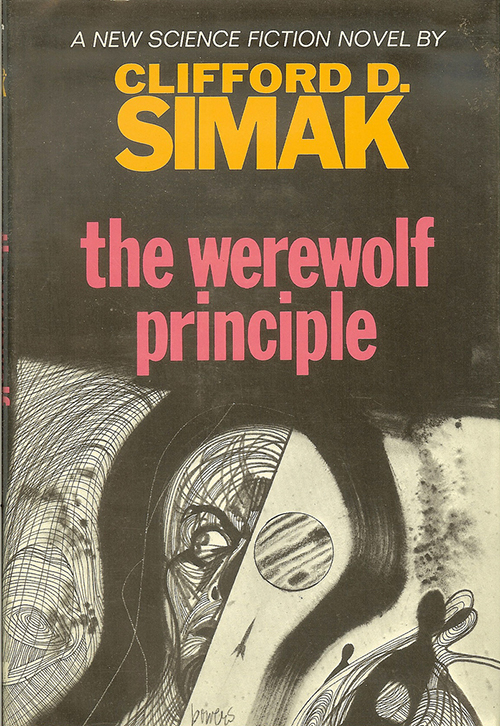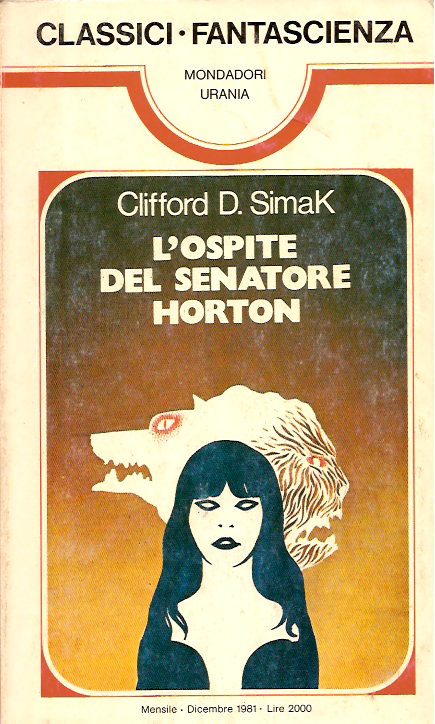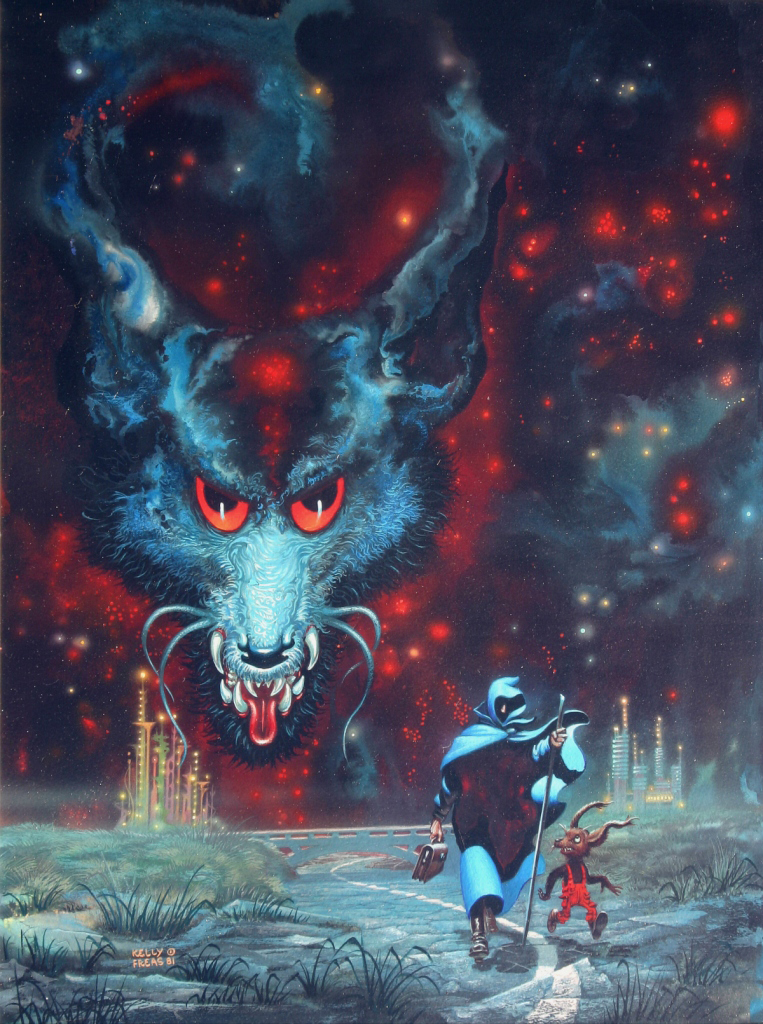The Werewolf Principle by Clifford D Simak is a fantastic book.
Cover by Ian Miller. From pulpcrush’s Flickr photostream.
I have fond memories of reading and re-reading City by Simak but for some reason I’ve never checked out any of his other books. The description of The Werewolf Principle in this Tor blog post about engineering humans for different planetary environments, however, made me want to track it down. I couldn’t find it at any of my usual Austin used sf book haunts, but when I went to NYC for BCGF I visited the new Singularity & Co bookstore in DUMBO and there it was.
Cover artist unknown. From pulpcrush’s Flickr photostream.
Simak’s day job was in journalism and it’s evident in his clear, quickly moving sentences. The dialogue is a little too clunky and expository but where Simak shines is in his unexpected combination of ideas, evocative imagery, and philosophical explorations.
Dutch translation. Cover artist unknown. From Jan van den Berg’s Flickr photostream.
In The Werewolf Principle, Simak focuses on the dilemma of his protagonist, Andrew Blake, a shapeshifting artificial human who struggles to integrate his implanted memories of a youth in the American Midwest with the consciousness and strange abilities of the two aliens he can transform into: a mystical, telepathic wolf-like creature and an indestructible intelligent pyramid of sludge who is strictly logical and emotionless. If it sounds like a strange setup, it is. Simak eases you into it by starting Andrew Blake, whose name I took as a riff on A Blank, as an amnesiac, found floating frozen in space. Simak also does an admirable job of hinting at the hard-to-understand thought processes of the aliens.
Cover by Richard M Powers. From Cadwalader Ringgold’s Flickr photostream.
Andrew Blake’s struggle to find a place for himself enables Simak to discuss what it means to be human, the consequences of mind uploading and cloning, and the purpose of intelligence in the universe. Simak does all this without straying too far from a small town in the Midwest, placing his story on a future Earth where technology has freed humanity to live a more pastoral life. The Werewolf Principle has its feet planted in Ohio but its eyes focused on the stars, imagining a variety of alien civilizations. In that, it reminds me of Olaf Stapledon’s masterpiece Star Maker, where the narrator walks out on an suburban English hill and has his mind transported throughout the galaxy.
Italian translation. Cover by Karel Thole. From Anobii.
What separates The Werewolf Principle from Star Maker is that it hints at the larger life of the galaxy but keeps the story focused on the mental anguish of one person. Simak condenses the sometimes dry descriptions of far too many lifeforms in Star Maker to short descriptions of landscapes: wind-swept alien tundra bathed in starlight, sweltering swamps, yellow domes filled with crustacean intelligences, infinitely tall black towers held together by time kept out of sync, and intergalactic spider webs. Simak also adds a love of the earth and all the things that grow on it. His descriptions of bucolic valleys and moonlit autumnal forests are evocative. However, by keeping The Werewolf Principle short and mostly earthbound, Simak doesn’t reach the same epic heights and almost religious fervor of Star Maker.
Cover painting by Kelly Freas without book title. From Robert Weinberg’s collection on The Illustration Exchange.
In multiple books, Simak uses hard sf concepts to populate small-town America with creatures more typically seen in fantasy novels. The Werewolf Principle has brownies and the titular werewolf. The Goblin Reservation contains banshees, trolls, and goblins (of course). Talking dogs are the dominate the Earth in City. Simak’s concerns, however, are strictly science fiction: the future of humanity and the place of intelligence in the cosmos. I’d definitely recommend checking out his novels.

